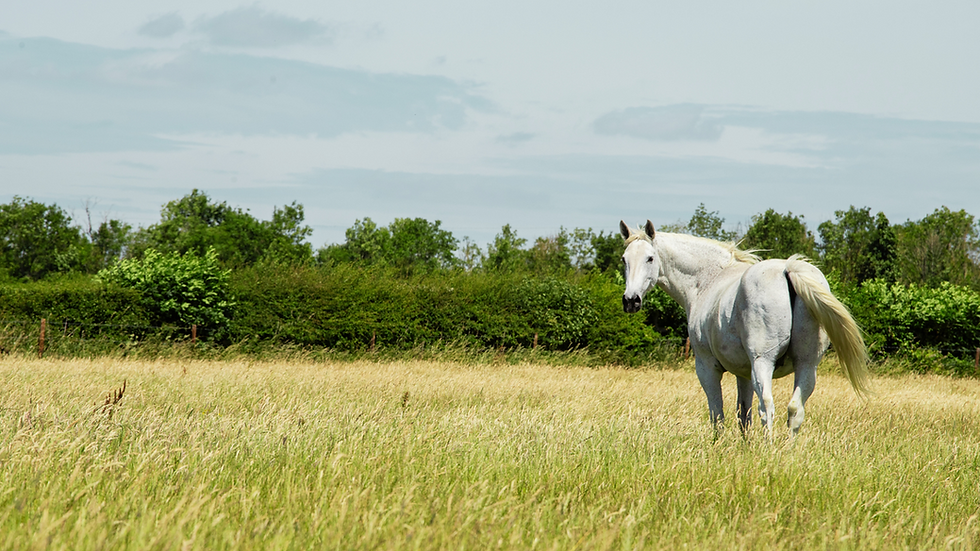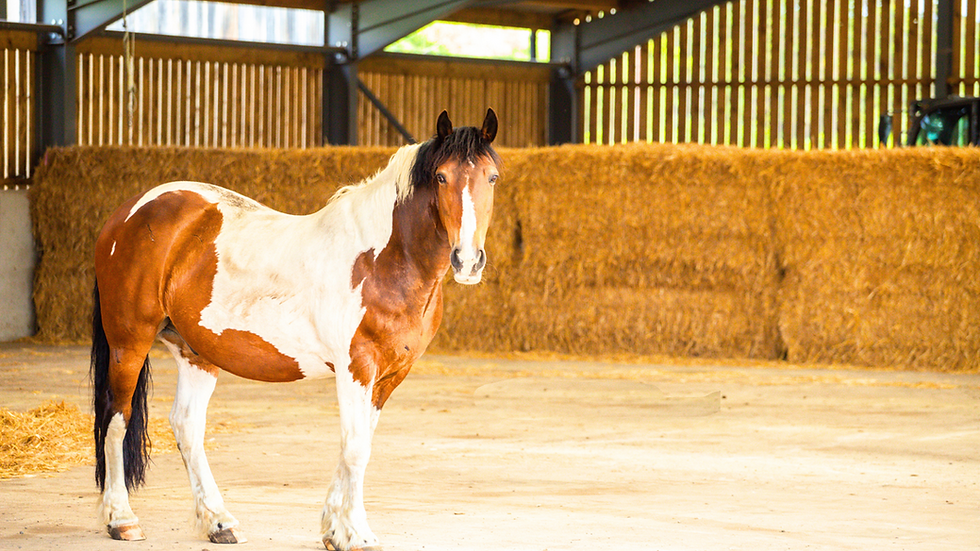Planning for Your Horse’s Retirement: What To Consider & How We Can Help
- sallyglebefarm
- Aug 29
- 2 min read
Retiring a horse is a major milestone. Whether your horse is stepping back due to age, injury, or simply a well-earned rest, choosing the right retirement livery is essential for their long-term wellbeing.
Here’s what to consider when planning your horse’s retirement, and what to look for in a livery that puts welfare first.
When is it time to retire? Planning your horse's retirement:
There’s no universal age or condition that signals retirement. Some horses retire in their teens due to injury or chronic conditions, while others continue light work into their twenties.
Common signs include:
Ongoing lameness or stiffness
Chronic conditions like arthritis or Cushing’s
Loss of enthusiasm for ridden work
Difficulty maintaining weight or muscle
It’s always best to consult your vet, farrier, and physio to make an informed decision. Many horses benefit from a gradual reduction in work rather than an abrupt stop.

What Makes a Good Retirement Livery?
Not all retirement liveries are created equal.
Here are the key features to look for:
1. Safe, Stable Herd Dynamics
Horses are social animals, and a well-managed herd is vital for their mental health. Look for yards that:
Match horses by age, temperament, and health status (e.g. similar fat scores or mobility levels)
Monitor herd behaviour closely to prevent bullying
Provide quiet spaces or separate areas for horses that need time away from the group
A good yard will be proactive in managing introductions and adjusting groups if needed.
2. Shelter and Space
Horses should have access to shelter year-round, whether that’s field shelters, open barns, or natural cover. Ample turnout space allows for movement, which is especially important for managing conditions like arthritis.
3. Consistent, Experienced Care
Look for yards with structured routines and experienced staff who understand the needs of older or resting horses.
This includes:
Twice-daily checks
Individual feeding and medication
Regular condition scoring and health monitoring
Coordination with vets, farriers, and dentists
4. Freedom and Flexibility
Some horses thrive in small, quiet herds; others prefer more space and social interaction. A good livery will offer flexibility in setup and be willing to adapt care as your horse’s needs change.
5. Clear Communication
You should feel confident that your horse is being well looked after, even if you can’t visit often. Choose a yard that offers regular updates and is happy to communicate as frequently as you’d like.
Supporting a Smooth Transition
Retirement isn’t the end, it’s a new chapter. With the right environment, horses can enjoy many happy, healthy years in the field. Taking the time to find a livery that prioritises welfare, structure, and individual care will give you peace of mind and your horse the retirement they deserve.


Comments